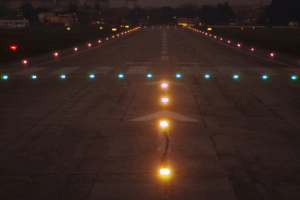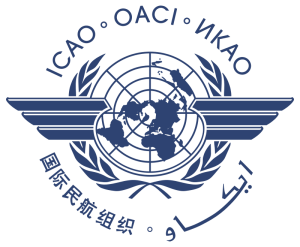Nuestros clientes nos preguntan a menudo qué pueden hacer para que sus sistemas de iluminación aeroportuaria funcionen eficazmente, reduciendo al mismo tiempo las llamadas de mantenimiento y ahorrando dinero a largo plazo.
En el artículo de este mes, hemos pensado en enumerar tres consejos esenciales para el mantenimiento de los equipos y qué hacer si surge algún problema con su sistema.
Realizar controles visuales diarios
Dependiendo del tamaño de un aeropuerto, muchas jurisdicciones pueden exigir legalmente a los operadores de aeropuertos y pistas de aterrizaje que realicen comprobaciones visuales diarias de sus equipos de iluminación aeroportuaria. Este proceso incluye encender las luces a máxima intensidad y buscar luces parpadeantes o fundidas a lo largo de la pista de rodaje, el borde de la pista, la pista de aterrizaje y despegue y la pista de aterrizaje y aterrizaje. Indicadores LED de trayectoria de aproximación de precisión (PAPI) así como luces identificadoras de final de pista (REIL).
Muchos operadores aeroportuarios realizan el control visual a las 6 de la mañana, cuando los niveles de luz natural son óptimos para esta tarea en muchas partes del mundo.
Durante la comprobación visual, los técnicos aeroportuarios también deben asegurarse de que las luces emiten la misma cantidad de luz. Si alguna es más clara, más tenue, más brillante o de un color diferente a las demás, hay un problema que debe solucionarse.
También es posible que algunas luces estén desalineadas, mal orientadas o hayan desaparecido por completo, debido a que una máquina quitanieves, una segadora u otro equipo pesado las haya derribado. Muchas tecnologías de iluminación aeroportuaria incluyen funciones de seguridad en caso de que una luz esté desalineada. Por ejemplo, los PAPI se apagan automáticamente si hay un problema de alineación con uno o más de los cabezales de luz y alertan a los técnicos para que puedan resolver el problema.
Limpieza y mantenimiento periódicos de los sistemas de iluminación de aeropuertos
Debido a su ubicación en amplios espacios abiertos, los sistemas de iluminación de los aeropuertos están sometidos a todo tipo de abusos de la naturaleza, y se incrustan de polvo, barro, excrementos de pájaros y otras sustancias que pueden afectar negativamente a su visibilidad. Recomendamos limpiar el equipo siempre que sea necesario utilizando agua y un jabón no abrasivo que no raye la lente, aplicado con una esponja suave.
Además, asegúrese de retirar la nieve de la lente después de una nevada para garantizar la fiabilidad, el rendimiento y la visibilidad de la iluminación.
Pruebas Megger
Un megóhmetro envía tensión a través de un conductor y mide la resistencia a la fuga de corriente en megaohmios. Una lectura baja indica un aislamiento degradado, una conexión floja u otras vías no deseadas a tierra. La FAA sugiere que las lecturas inferiores a 1 megaohmio indican que un circuito se dirige rápidamente hacia el fallo. La localización de fallos a tierra no deseados puede determinarse probando cada mitad de un circuito defectuoso, y luego cada mitad de la sección defectuosa, y así sucesivamente, hasta aislar el fallo.
Muchos reguladores de corriente constante (RCC) tienen una pantalla que puede indicarle su nivel de amperaje, o puede utilizar herramientas de terceros para realizar pruebas Megger.
Los daños en los cables causados por la fauna salvaje, el desgaste o la caída de rayos suelen provocar un bajo amperaje. Para que el sistema vuelva a funcionar de forma segura y fiable, deben instalarse cuanto antes nuevos cables, transformadores o kits de conectores. Dado que el proceso puede durar varias horas, muchos aeropuertos optan por realizar las pruebas Megger durante la noche.
Solución de problemas en los sistemas de iluminación de aeropuertos
Si, durante una comprobación visual o una limpieza, descubre que una o varias luces no funcionan correctamente, puede seguir algunos pasos para solucionar el problema antes de solicitar una reparación.
Consulte el manual del usuario
El paso más importante es consultar el manual del propietario para obtener información importante sobre la seguridad de su equipo. En nuestra página puedes consultar fácilmente los manuales de los productos Airport Lighting Company..
Contar las luces
Empieza por contar cuántas luces están afectadas. Si hay más de una, fíjate en su posición: ¿están alineadas, cerca unas de otras o en distintos extremos de la pista? Dependiendo del tamaño de la pista de aterrizaje, tan sólo dos luces apagadas seguidas pueden provocar el cierre del aeropuerto, por lo que una respuesta rápida es fundamental en estos casos.
Compruebe la lente y la bombilla
¿La lente está rota, agrietada, quemada o corroída? ¿Los restos de la lente rota han afectado a la lámpara o al motor de la luz? Sustituya las piezas afectadas por repuestos de su inventario o haga una prueba con piezas de una luz adyacente que funcione y encienda las luces de nuevo para ver si así se resuelve el problema.
Inspeccionar la instalación subterránea
Si el problema es con una sola luz y su lente y lámpara o motor luminoso no parecen dañados, el problema podría estar en la luminaria subterránea. Nunca realice tareas de mantenimiento o reparación en un circuito con tensión: puede ser mortal.. Con el circuito sin tensión mediante los procedimientos de bloqueo y etiquetado, retire la parte superior de la lata y compruebe si el transformador y el conector están sueltos, lo que suele ocurrir debido a una instalación inadecuada. La congelación y descongelación del agua durante el invierno puede separar aún más los conectores.
Puedes volver a juntar físicamente las conexiones para crear el circuito e intentar encender de nuevo las luces para ver si ahora están operativas.
Realizar registros para investigaciones posteriores
Anota los números de serie y la ubicación de las luces apagadas. Cuando llame a su proveedor de serviciosLos números de serie les permitirán saber quién, dónde y cuándo se fabricaron las luces. Esta información puede ayudarles a determinar si podría haber un problema de fabricación.
Llame al Airport Lighting Company para obtener asistencia técnica
No dude en llamar al Airport Lighting Company si no está seguro de por qué no funcionan sus luces o su sistema eléctrico. Nuestros técnicos le ayudarán a que su sistema de iluminación del aeropuerto vuelva a funcionar sin problemas. Llame al 315-800-9937 o al número gratuito 1-866-212-1060 para obtener una asistencia rápida y cordial en la que puede confiar.





